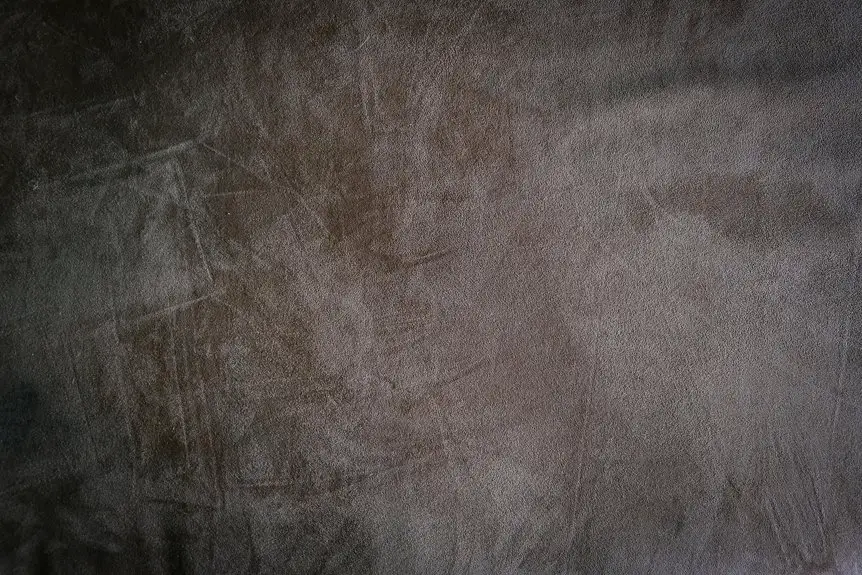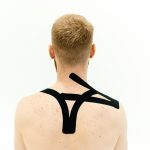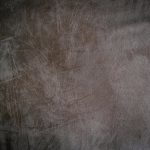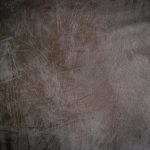You shouldn’t iron suede fabric directly because its delicate fibers can get damaged by heat, causing permanent marks, texture changes, or discoloration. If you must use heat, keep the iron on the lowest setting, always place a cloth between the iron and suede, and test a small area first. But generally, safer alternatives exist to smooth suede without risking ruin. Keep going to find out how you can care for suede properly and avoid damage.
Table of Contents
Key Takeaways
- Ironing suede is generally unsafe due to heat damaging its delicate fibers and altering texture.
- If necessary, use the lowest heat setting with a protective cloth between iron and suede.
- Avoid direct steam or moisture exposure on suede when applying heat.
- Test heat on a hidden area first and move the iron lightly and quickly to reduce risk.
- Professional cleaning or alternative methods like steaming at a distance are safer for maintaining suede.
Understanding the Properties of Suede Fabric
Suede fabric has a distinct texture that feels soft and velvety to the touch, but it’s also quite delicate. When you work with suede, you’ll notice it’s made from the underside of animal hides, giving it a napped finish that’s prone to damage if handled improperly.
Unlike smooth leather, suede absorbs moisture easily, which means it can stain or warp if exposed to water or heat. You should also know suede’s fibers can flatten or become shiny when rubbed or pressed hard.
Because of its porous nature, suede doesn’t respond well to high temperatures, which is why you need to be cautious with heat sources. Understanding these properties helps you treat suede gently and avoid mistakes that could ruin its appearance.
Risks Involved in Ironing Suede
You need to be careful when ironing suede because the heat can easily damage the fabric.
Applying too much heat might cause permanent marks or burns.
Plus, ironing can change the texture, leaving it stiff or flattened instead of soft and supple.
Heat Damage Potential
Although ironing might seem like a quick fix for wrinkles, applying heat to suede fabric can cause irreversible damage. Suede’s delicate fibers are sensitive to high temperatures, which can lead to discoloration, shrinkage, or even burning. When you expose suede to direct heat, it loses its natural texture and softness, making the damage permanent.
Here’s a quick summary of heat damage risks:
| Heat Level | Effect on Suede | Result |
|---|---|---|
| Low (< 200°F) | Slight fiber stress | Possible mild dulling |
| Medium (200-300°F) | Fiber shrinkage | Stiffness, warping |
| High (> 300°F) | Burning & discoloration | Permanent damage |
To protect your suede, avoid using a hot iron directly on it.
Texture Alteration Risks
When you iron suede, the fabric’s unique texture can quickly change, losing the soft nap that gives it its characteristic feel. The heat and pressure from the iron flatten the fibers, making the suede look shiny or patchy.
You might notice uneven spots where the texture appears crushed or stiff, which can be difficult to restore. Since suede relies on its raised fibers for that luxurious softness, any alteration affects its appearance and tactile quality.
Even gentle ironing risks permanent damage because the fabric’s delicate surface reacts unpredictably to heat. Instead of ironing, you should consider steaming or brushing the fabric to maintain its texture.
Ironing suede often leads to irreversible changes, so it’s best to avoid it if you want to preserve the fabric’s natural look.
When and How to Use Heat on Suede Safely
You’ll want to use the lowest heat setting possible when applying heat to suede to avoid damage.
Always place a protective cloth between the iron and the fabric to shield it from direct contact.
If you’re unsure, try alternatives like steaming or using a suede brush instead of ironing directly.
Appropriate Heat Settings
Because suede is a delicate material, you need to be very careful with heat to avoid damage.
Using too much heat can scorch or flatten the nap, ruining the texture. Always set your iron to the lowest possible temperature, ideally the “synthetic” or “silk” setting, which is gentle enough for suede.
Avoid using steam directly on suede since moisture combined with heat can cause water spots. Instead, place a thin cotton cloth between the iron and the suede to add a protective layer.
Here are key tips for appropriate heat settings:
- Use the lowest heat setting on your iron
- Avoid direct contact with suede; use a pressing cloth
- Steer clear of steam or spray water while ironing
- Test on an inconspicuous area first
- Move the iron quickly and lightly to prevent burns
Protective Measures for Suede
Although suede requires careful handling, you can safely use heat by taking proper protective measures.
First, always turn your iron to the lowest heat setting suitable for delicate fabrics. Place a clean, thin cloth—like a cotton handkerchief or pressing cloth—between the iron and your suede to shield it from direct contact.
Keep the iron moving constantly to avoid overheating any spot. Never apply steam directly to suede, as moisture can damage the texture.
Test on a small, hidden area before treating the entire piece to ascertain no adverse effects.
After ironing, let the suede cool and dry naturally, away from direct sunlight or heat sources.
These steps help maintain suede’s softness and prevent burn marks, so you can refresh your fabric without worry.
Alternatives to Direct Ironing
When direct ironing risks damaging suede, you can opt for safer heat alternatives to refresh your fabric. Instead of applying high heat directly, use gentle methods that protect the texture and appearance.
For example, steaming can help release wrinkles without pressing the fabric flat. Always keep the steamer at a safe distance to avoid moisture buildup. You might also try using a warm, not hot, hairdryer from a distance to gently loosen fibers.
Remember, patience is key—slow, careful treatment prevents harm.
Here are some alternatives to direct ironing:
- Use a handheld steamer held a few inches away
- Employ a warm hairdryer on low heat setting
- Hang suede in a humid bathroom to release creases
- Place a clean cloth over suede and press gently with a warm hand
- Brush the nap softly to restore texture after treatment
Alternative Methods to Remove Wrinkles From Suede
If you want to avoid damaging your suede by ironing, you can try several alternative methods to remove wrinkles effectively.
First, hang your suede garment in a steamy bathroom; the moisture and warmth help relax the fibers gently. Avoid direct water contact to prevent stains.
Hang your suede in a steamy bathroom to gently relax fibers without wetting the fabric.
You can also use a suede brush or a soft cloth to lightly brush the fabric, which can lift wrinkles and restore texture.
Another method is to lay the suede flat on a clean surface, placing a clean cloth over it, then gently pressing with your hands to smooth out creases.
Tips for Proper Suede Care and Maintenance
Because suede is a delicate material, you’ll want to handle it with care to keep it looking its best. Proper care and maintenance can extend its life and preserve its texture.
Avoid exposing suede to water or harsh chemicals, as these can cause damage. Regular brushing helps maintain the nap and remove dust. Store suede items in a cool, dry place away from direct sunlight to prevent fading.
Here are some tips for proper suede care:
- Use a soft-bristle suede brush regularly to lift dirt and restore texture
- Apply a suede protector spray to repel water and stains
- Avoid wearing suede in rainy or snowy weather
- Spot clean stains immediately with a suede eraser or cloth
- Store items in breathable bags to prevent moisture buildup and mildew
Professional Suede Cleaning and Restoration Services
Although you can handle routine suede care at home, professional suede cleaning and restoration services offer expert solutions for tougher stains and wear.
When your suede items develop deep stains, persistent odors, or significant damage, these professionals use specialized techniques and products to restore their appearance without risking harm. They understand suede’s delicate texture and know how to safely remove dirt and oils that home methods often can’t tackle.
Plus, if your suede fabric has lost its softness or has become stiff, experts can rejuvenate the nap to make it feel like new again. Instead of attempting risky fixes like ironing, trusting professionals guarantees your suede maintains its look and longevity, saving you time and potential damage.
Frequently Asked Questions
Can Suede Fabric Be Machine Washed Safely?
Think of suede as a delicate butterfly; tossing it in a washing machine is like placing that butterfly in a storm. You shouldn’t machine wash suede—you’ll damage its texture and beauty, so always opt for gentle hand cleaning instead.
How Do You Store Suede Clothing to Prevent Damage?
You should store suede clothing in a cool, dry place away from direct sunlight. Use padded hangers to maintain shape, and cover with breathable garment bags. Avoid plastic, which traps moisture and can cause damage over time.
What Are the Best Products for Waterproofing Suede?
You should use a spray specifically designed for suede, like Scotchgard or Kiwi Suede Protector. These products create a water-resistant barrier without damaging the texture. Always test on a small area and apply evenly for best results.
Is It Possible to Dye Suede at Home?
Yes, you can dye suede at home using special suede dye. Just clean the fabric first, apply the dye evenly, and let it dry completely. Remember to test on a small area to avoid unwanted results.
How Do You Remove Stains From Suede Without Water?
Imagine wielding a medieval knight’s brush—use a suede brush or eraser to gently lift stains without water. You’ll avoid damage while restoring suede’s texture, keeping your fabric looking fresh and timeless, like a classic suit of armor.
- The Ultimate Guide to Leather Sofa Repair - July 9, 2025
- How to Fix a Tear in a Leather Sofa: A DIY Guide - July 9, 2025
- Can Bed Bugs Live on a Leather Sofa? (And How to Get Rid of Them) - July 9, 2025







